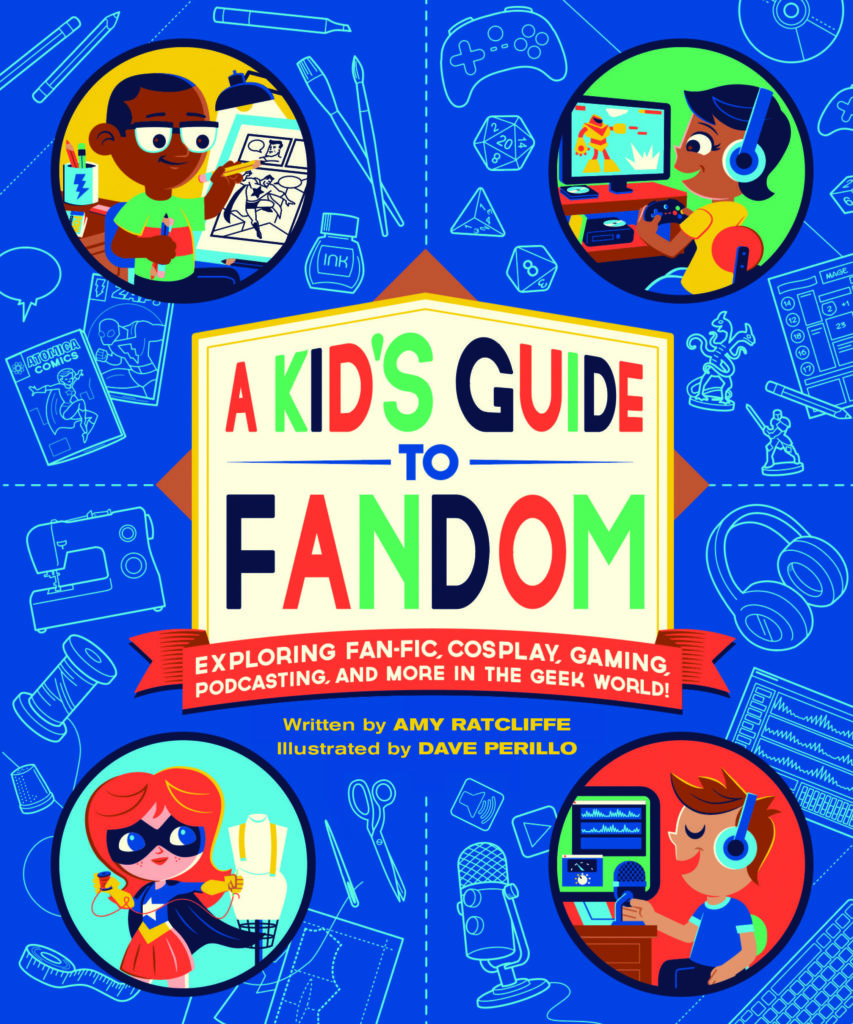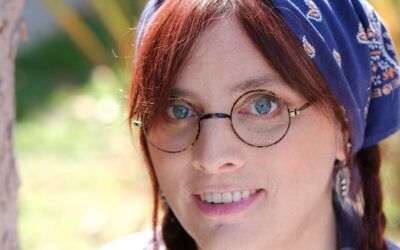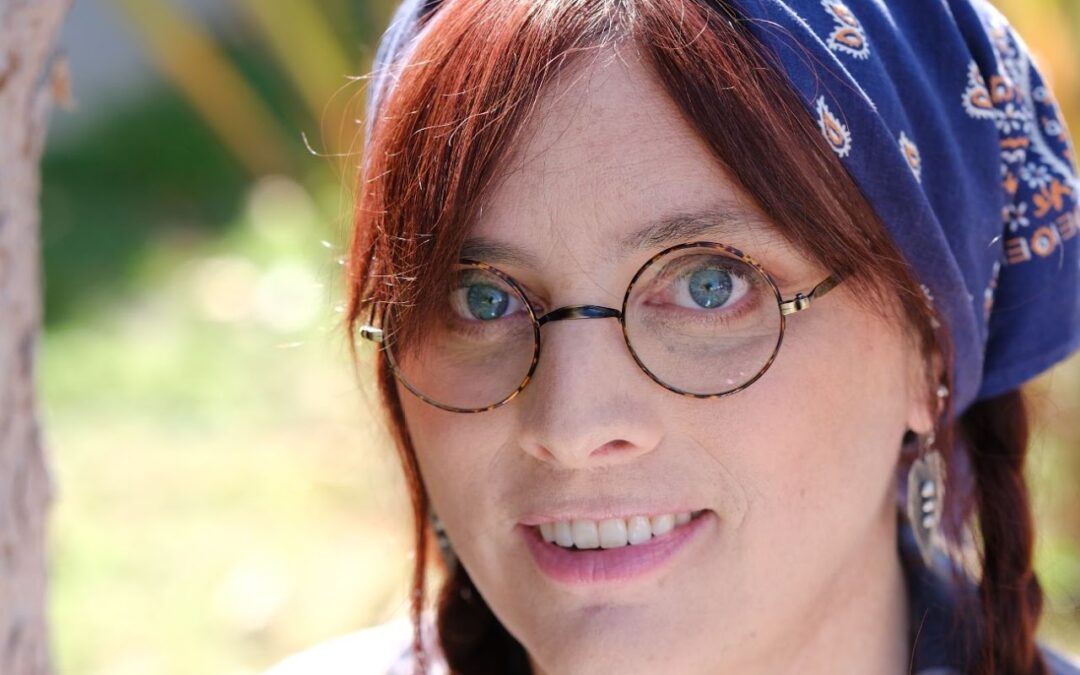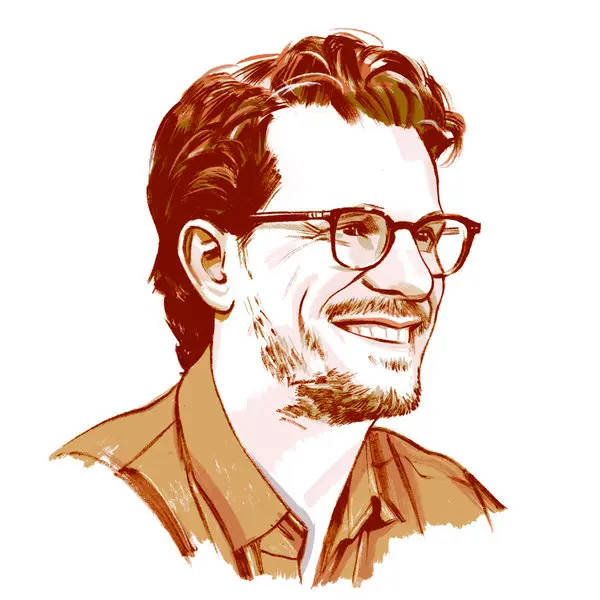Amy Ratcliffe is part of many fandoms, including Star Wars, The Witcher, and anything Tolkien. She’s cosplayed as Han Solo and Merida. She’s the author of Star Wars: Women of the Galaxy and Elee and Me. She’s the managing editor for Nerdist, a host, and an entertainment reporter. Her latest book, A Kid’s Guide to Fandom, was illustrated by Dave Perillo and is available now. Based in Los Angeles with her husband and two cats, she’s always looking forward to the next time she eats pizza.
I had the opportunity to interview Amy, which you can read below.
First of all, welcome to Geeks OUT! Could you tell us a little about yourself?
Thank you! I’m a geek, an author, an entertainment reporter, a host, and a managing editor for Nerdist. My first fandom was probably The Wheel of Time book series; I started reading them as a teen. Then fast forward several years later, and I fell in love with Star Wars: The Clone Wars and that series (especially Ahsoka!) led me to discover my passion for writing.
How did A Kid’s Guide to Fandom come to be? Did someone reach out to you about the project or did you generate the idea on your own?
My incredible editor at Running Press Kids, Britny Brooks-Perilli, emailed me with the idea of writing something to help kids learn about fandom and get involved. Through a lot of back and forth, the project took the shape of a guide. We wanted it to be welcoming, practical, and helpful for any kids who might be curious about finding other kids who felt enthusiastic about similar things.
How did you get your start in pop culture journalism? What would you say are some of your favorite fandoms to cover?
When Star Wars: The Clone Wars premiered, I was just finding my way in the blogging world. At the time I was blogging about regional travel and food, but it never quite clicked. Then in gushing about The Clone Wars it hit me: I could start a blog about geeky things from my perspective. I launched Geek with Curves through Blogger in around 2009 and I did so with the intent of covering a wide range of topics and styles with the hopes that I could build a portfolio of sorts to show editors who might have paying work. And after a couple of years of pouring a lot of hours into Geek with Curves, I started getting a little money writing for various outlets.
The fandoms I cover depend upon what’s in the pop culture zeitgeist to some degree, so recently my favorites have included: Shadow and Bone (I adore the books this series is adapted from), Loki and the MCU at large, and Star Wars.
Many would argue that pop culture isn’t that important to talk about, serving merely as shallow entertainment. What would you say is the significance or function of pop culture in our culture?
This is something I think about a lot in my role at Nerdist. Pop culture is hugely important. Stories are never just stories. Fiction is a reflection of our world and sometimes a lens through which we can examine IRL issues. Representation matters. Stories can present different perspectives and ideas, and writers reacting to those stories through essays or interviews can do the same. As a culture we give a lot of attention to pop culture, so we can’t dismiss it as shallow at the same time. Pop culture should broaden our horizons.
What advice would you give to someone looking to break into your field?
It’s definitely a constantly changing field, and I recognize that the path I took over 10 years isn’t as likely to work out now. So I’d say get in touch with entertainment writers and editors you admire. Challenge yourself to think of pitches connected to contemporary pop culture—even if you’re not ready to pitch yet, it will help put you in the right mind set. Have some kind of writing samples, even published through your own site or blog, to share with editors. And once you do start pitching, be very aware of the kind of stories the outlet you’re pitching to publishers. Finally, be persistent.

In your book, A Kid’s Guide to Fandom, you advise kids to reach out to their parents/guardians upon first entering fandom, which might be tricky for some closeted kids? Are there any alternatives you might suggest?
That’s a really good point! When kids are entering spaces online or IRL where they’re meeting new people, I think it’s wise for someone else—usually an older someone else—to be in the loop for safety. Perhaps closeted kids can stick to sharing details about only the fandom, whatever that may be.
Since the time of the pandemic, are there ways you’ve seen fandom evolve, change, or adapt when much of fandom hasn’t been able to meet up IRL?
In the earlier days of the pandemic, before many of us experienced Zoom fatigue, being able to meet up online was a boon. It was an easy way to connect with people regardless of distance, or traffic, or schedules. For myself and for friends, playing RPGs like Dungeons & Dragons became easy and happened on a more regular schedule because we took away the in person aspect. Likewise conventions have scrambled to bring experiences online for fans, and it’s made those kind of events more accessible. I hope we see more of that accessibility in the future, even after it’s safe for in person events to resume.
Can you name any of your favorite fandom experiences growing up?
I definitely didn’t know the word fandom until I was in my 20s, but looking back, I was absolutely part of The Wheel of Time fandom. I started reading the Robert Jordan books in high school. I had to visit a family friend to use her dial-up internet in order to visit fan sites and roleplay as an Aes Sedai in a fan forum.
Are there any other projects you are working on and at liberty to speak about?
I have a few projects in the works right now, but I can’t talk about any of them yet unfortunately.
What queer books/media would you recommend to the readers of Geeks OUT?
I recently read and adored Molly Ostertag’s The Girl from the Sea graphic novel for middle grade readers. On the adult side, I recommend Casey McQuiston’s One Last Stop and Cat Sebastian’s The Queer Principles of Kit Webb.







0 Comments